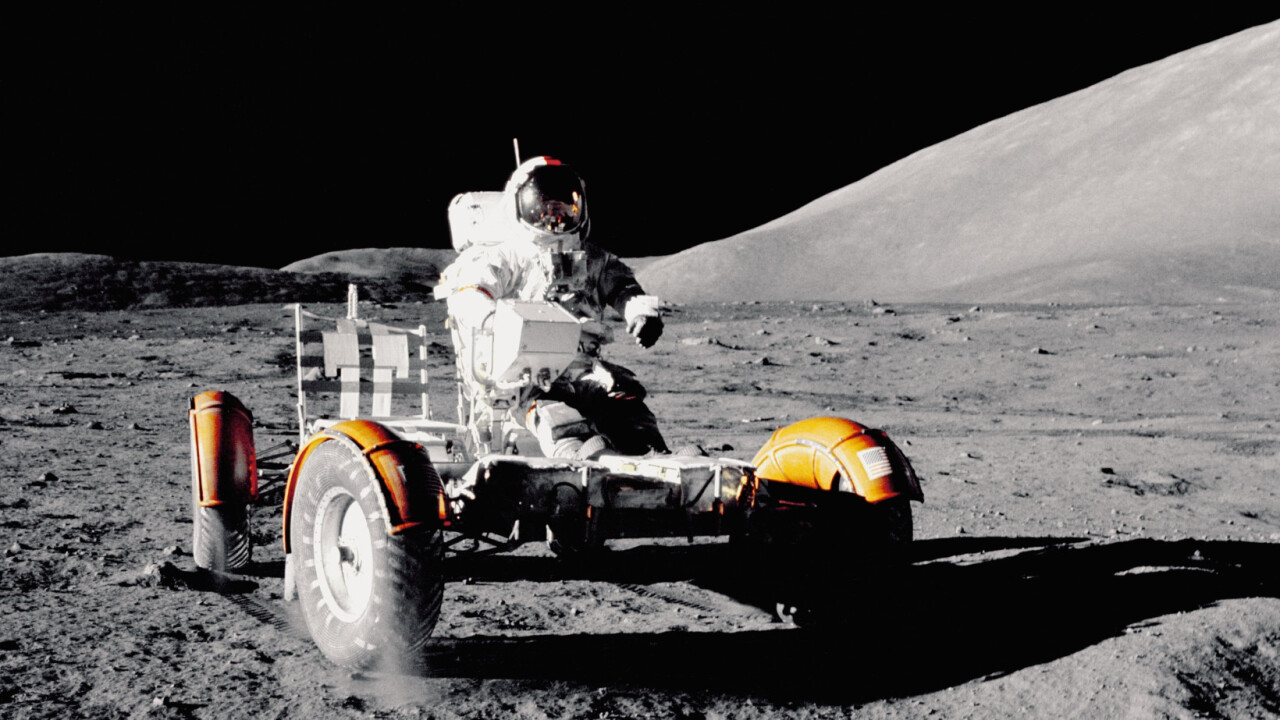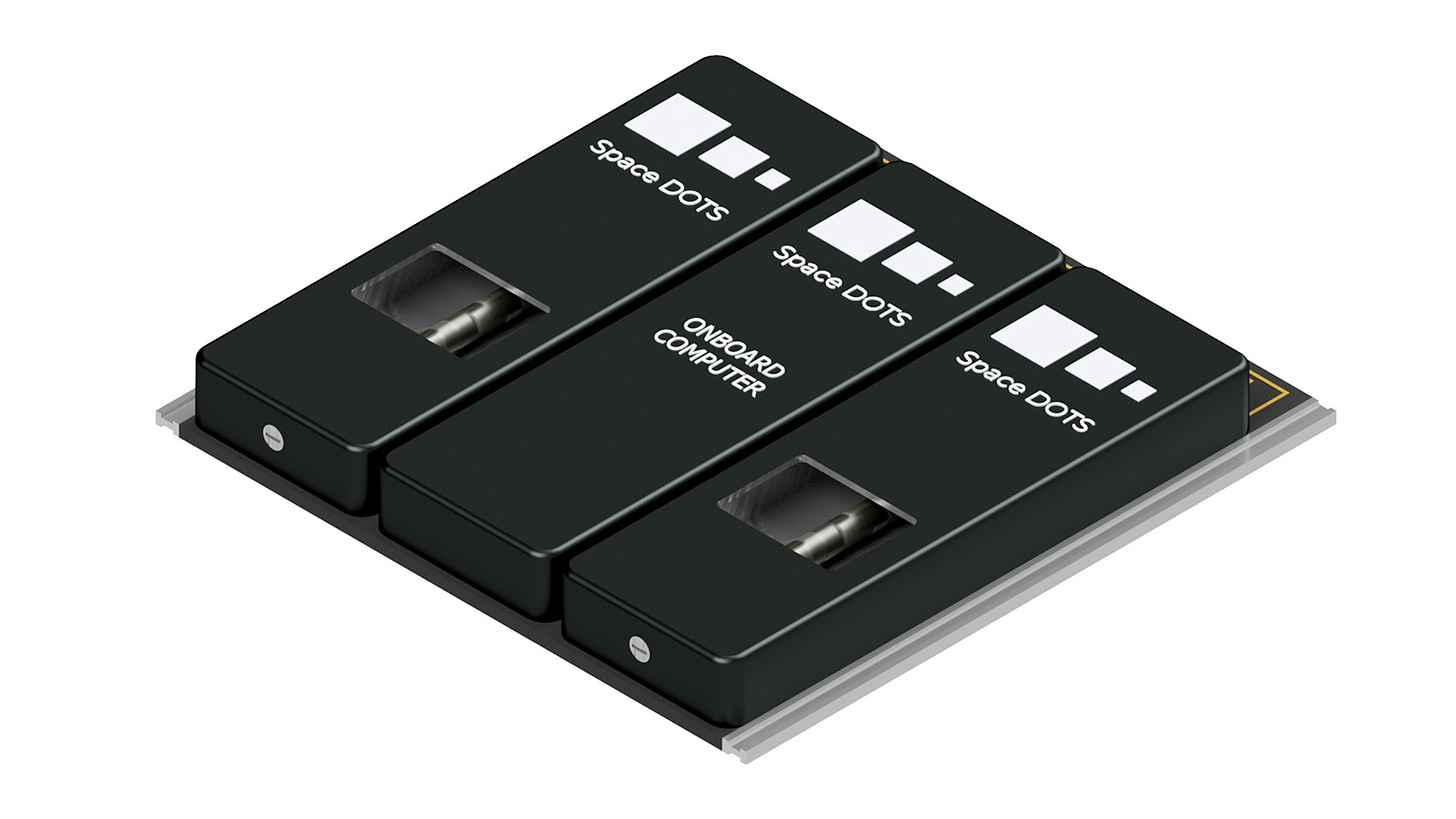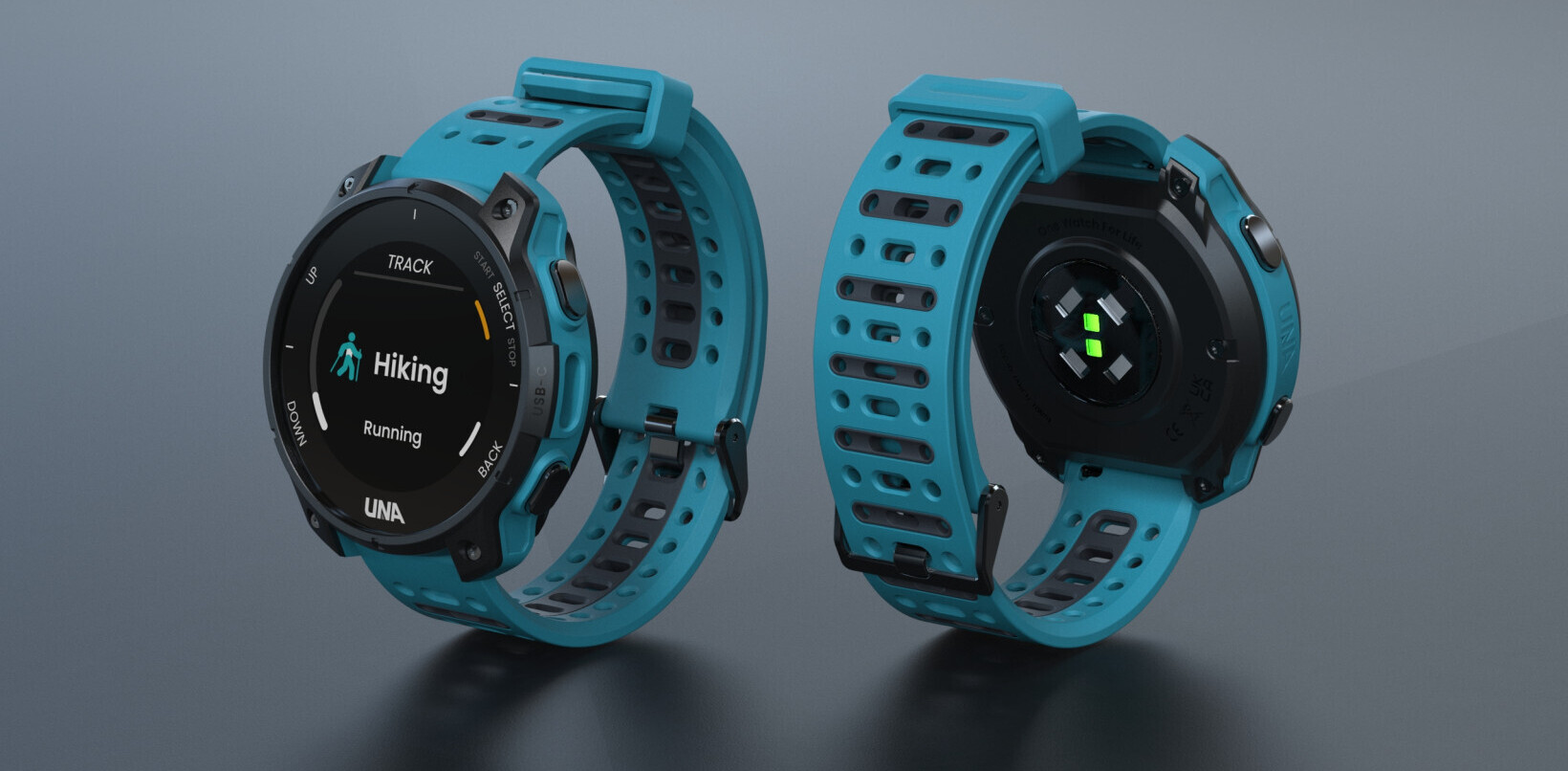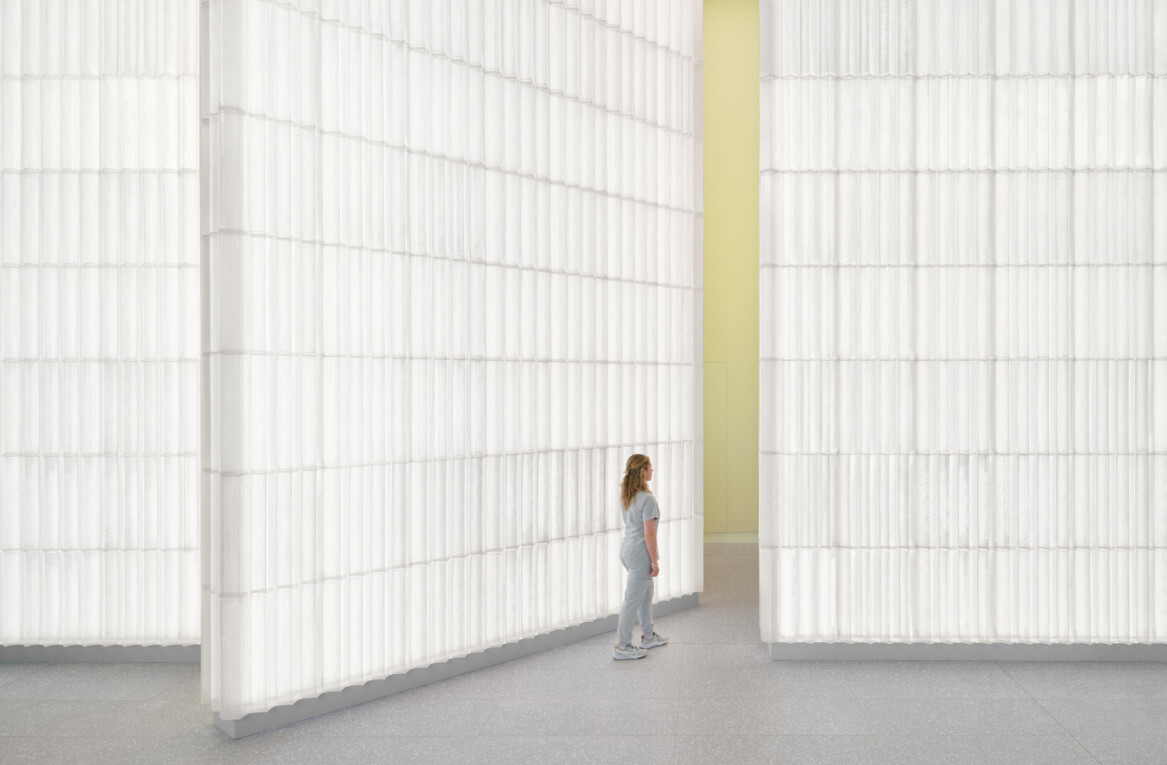
This story is syndicated from the premium edition of PreSeed Now, a newsletter that digs into the product, market, and founder story of UK-founded startups so you can understand how they fit into what’s happening in the wider world and startup ecosystem.
The burgeoning industry around space technology is based heavily on hardware, but the materials that hardware is built from need to undergo rigorous testing on Earth before they’re sent out into orbit and beyond.
Space DOTS is a startup that wants to transform material testing in the space industry by skipping the tests down here, and sending the materials straight up into space.
“What we do is a smartphone-sized version of a testing lab that anyone would use on ground to test materials’ properties before actually going into space. We have shrunk everything down so that it can be launched very quickly and easily at a lower cost, directly into orbit,” explains co-founder and CEO Bianca Cefalo.
“Instead of going through the entire process of iteration, failure, and iteration on the ground, you can just ‘fail fast, iterate’ faster, directly in space at a cost that is not going to break the bank of anybody doing so.”
Cefalo gives the example of graphene, the light, strong, and thin material that has excited a lot of people since it was first discovered in Manchester 20 years ago. Before it could be used in, for example, the panels of a spacecraft, you would need to understand its properties (for example its reaction to heat) and how they perform in space.
She explains that this tends to be done first via simulation software, and then in labs that simulate the conditions of space. These tests help to understand the material’s performance in a vacuum, in reaction to the radiation in space, and the like.
“All these different environmental conditions are all simulated on the ground, then you cross-correlate the results. And you have an estimated understanding of what’s going to happen to this material once it goes into space… However, the last mile of validation is to actually test it in space to see how it really behaves under real space conditions.”
London-based Space DOTS wants to cut out all the ground-based estimations with the 10x10x1 centimeter laboratory it is developing, inside which tests can be conducted onboard spacecraft.
A closer look at the tech
The first test the startup has developed is a tensile test, where a small sample of a material can be stressed to breaking point.
“That’s going to tell us what happened to it from a structural perspective in the exact environment, with the cumulative effects of the vacuum of space, radiation, the atomic oxygen, everything. That’s something that you wouldn’t get on Earth.”
Cefalo says the alternative on Earth would be to test each of these conditions separately in washing-machine sized tensile testing machines. But separate tests create a cumulative margin of error for how the material would really behave under all those conditions at once.
Cefalo is understandably guarded about the secret sauce behind exactly how they have minaturised a materials testing lab to such a small size.
“All I can say is it’s a mechanism that doesn’t use any gears, motors, or bearings, because they wouldn’t work in space, they would freeze. What we’re doing is just based on pure physics.”
Making an impact on the future of space tech
Cefalo argues that the impact Space DOTS technology could have on the industry is huge, as it’d reduce the cost and time of certifying a material for use in space.
Whereas a traditional approach could cost millions of pounds and take years, Space DOTS hopes to charge much less, with the specific pricing depending on many variables. “And you know, certainly, how it’s going to work and you don’t have to repeat anything again on the ground because you’ve been to space, which is the ultimate validation.”
So that companies no longer have to get in line to eventually get a testing slot on the International Space Station, or shop around the difficult-to-penetrate space industry to find someone else willing to carry their experiment, Space DOTS plans to become a full service testing provider.
Cefalo says they are partnering with commercial space companies so anyone who needs a material tested in space can simply engage with Space DOTS and not have to worry about how the material actually gets up there and how it gets back.
“We take that load off the customer and we say ‘okay, tell us what do you need to do, tell us what kind of materials you want to test, what kind of orbital conditions or applications you have in mind. And we do everything for you, from mission requirements to sending it into space, and you don’t have to talk with anybody else.”
The plan is to allow customers to get into space “in a framework of months rather than years.”
And Cefalo hopes the Space DOTS approach can help the space industry catch up with progress in materials science. She says many newer materials aren’t covered by bodies such as NASA and the European Cooperation for Space Standardization (ECSS).
“You will find aluminium alloys, titanium, some plastics – a very basic database of materials. There are a whole lot of other materials and for those ones, there isn’t really a standardisation of how you should test them to be applied in space.
“Material sciences move very fast, and the space industry isn’t catching up quite as quickly as the material sciences moved. And we should be, because we think that space tech is sci-fi, but actually a Formula One car is more sci-fi than a spacecraft.”
The route to Space DOTS
Cefalo grew up in Naples, Italy, where she studied aerospace engineering . She then interned with a German company where she assessed the impact of Martian dust devils on an instrument that was eventually sent to Mars.
From there she spent several years in Berlin as a thermal engineer in the space industry, before moving on to work for Airbus Defence and Space in the UK as a space systems thermal product manager.
“I had to look at methods, solutions, and materials that would make the next generation of telecommunication spacecraft lighter, more powerful, smaller, and cheaper,” she says.
But despite there being plenty of opportunity to use cutting-edge materials, customers baulked at the idea of being the first to use a material in their very expensive new spacecraft.
Cefalo and a colleague, James Sheppard-Alden, realised this was a common issue in the industry and identified ‘direct orbital qualification’ as a solution.
“As much as you wouldn’t test a rain jacket in the sun, you would not test materials for space on Earth. They need to be tested directly there.”
Cefalo saw this issue again in her next role with aerospace materials company Carbice, so she and Sheppard-Alden teamed up to address the problem. They founded Space DOTS in 2021.
They have signed up customers under memorandum of understanding agreements, as they work towards the target of initial commercialisation in 2025, following their first-in-orbit demonstration next year.
Investment
Cefalo says Space DOTS has been bootstrapped to date, with the exception of some financial support as part of the ESA Business Incubation Centre’s incubation programme.
The company is currently in the process of raising a £1.5 million pre-seed round.
Vision
Cefalo sees Space DOTS’ future as filling an essential gap to fulfil the space industry’s potential.
“If you’re thinking about where the space industry is going, it’s going well beyond spacecraft and rockets. It’s going to commercial space stations, it’s going to an ecosystem in space, habitats on other planets, manufacturing in space…”
She says this will require recycling debris from space, and even creating new materials or manufacturing from zero in space.
“The one thing that is missing at the moment is how to make sure that what’s being recycled in space or is being manufactured in space can be used in space without having a protocol or a quality control system in place. So far, nobody’s really thought about that.”
So Space DOTS aims to become the way materials are tested in orbit, on the Moon, on Mars, or beyond.
Challenges
Aside from the obvious technical challenges of proving this thing works (yes, in-space testing needs in-space testing), Cefalo recognises the need to ensure the perceptions of what they’re doing are right.
“[We need to make sure] that what we’re doing is not seen as going against the status quo of qualification and testing in rounds.”
She doesn’t want Space DOTS to be seen as revolutionary.
“This creates a resistance with everything that has been done so far, especially when you go into the sales cycle. You may piss off people that think ‘oh, you’re coming in with this new technology with this new way of qualifying, or do you mean that everything I’ve done in my career so far is invalidated?’
“No. What we’re saying is that Space DOTS is just the organic evolution of where the industry is going and how we have to make sure to use the resources that we have, directly in space. We will never be the ones removing what has been done so far.
“The software simulation and the lab simulation will always need to happen. We want to facilitate the time to market of advanced materials by giving the extra mile of the validation in an easier, cheaper, and better way and making sure that these will be sustainable once an entire in-space ecosystem is built.”
Competition
“There are other companies who are doing very easy access to space high frequency testing, but they are focused on biotech, pharma, drugs, which is something that we don’t do because it’s that’s not our area of expertise, and it’s not something that we intend to do in the long term,” says Cefalo.
“So I think again, our main competitor is the status quo, which is how do we make sure that we are not going against them, but we’re actually helping them just as the next step of the evolution?”
The article you just read is from the premium edition of PreSeed Now. This is a newsletter that digs into the product, market, and story of startups that were founded in the UK. The goal is to help you understand how these businesses fit into what’s happening in the wider world and startup ecosystem.
Get the TNW newsletter
Get the most important tech news in your inbox each week.







